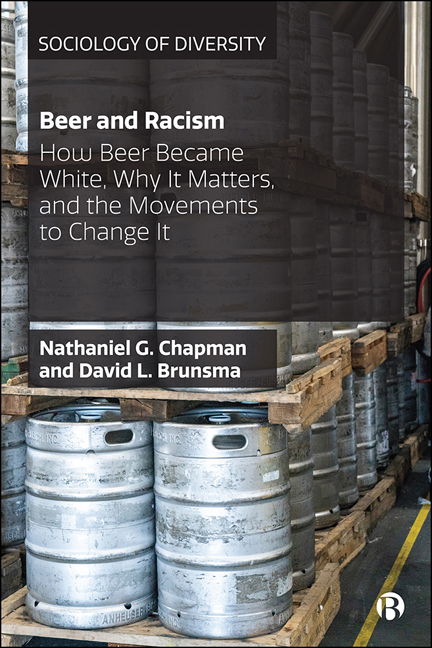Book contents
- Frontmatter
- Dedication
- Contents
- About the Authors
- Acknowledgments
- Foreword
- Series Editor Preface
- 1 Brewing Up Race
- 2 Racism, Brewing, and Drinking in US History
- 3 The Making of the (White) Craft Beer Industry
- 4 The Paths to Becoming a Craft Brewer and Craft Beer Consumer
- 5 Exposure, Marketing, and Access: Malt Liquor and the Racialization of Taste
- 6 Gentrification and the Making of Craft Beer White Spaces
- 7 #WeAreCraftBeer: Contemporary Movements to Change the Whiteness of Craft Beer
- Appendix A Respondents to the Semi-Structured Interviews
- Appendix B Interview Protocol
- References
- Index
5 - Exposure, Marketing, and Access: Malt Liquor and the Racialization of Taste
Published online by Cambridge University Press: 25 February 2021
- Frontmatter
- Dedication
- Contents
- About the Authors
- Acknowledgments
- Foreword
- Series Editor Preface
- 1 Brewing Up Race
- 2 Racism, Brewing, and Drinking in US History
- 3 The Making of the (White) Craft Beer Industry
- 4 The Paths to Becoming a Craft Brewer and Craft Beer Consumer
- 5 Exposure, Marketing, and Access: Malt Liquor and the Racialization of Taste
- 6 Gentrification and the Making of Craft Beer White Spaces
- 7 #WeAreCraftBeer: Contemporary Movements to Change the Whiteness of Craft Beer
- Appendix A Respondents to the Semi-Structured Interviews
- Appendix B Interview Protocol
- References
- Index
Summary
Industry representation
We have seen that exposure to beer, access to jobs in the beer and restaurant industries, access to a craft beer scene, and homebrewing, all undergirded by the fundamental power of social networks, are the most common pathways to becoming a brewer and a consumer. These social structures are classed, gendered, and raced, leading to a fundamental lack of diversity. We want to look more closely at how the lack of diversity and representation in the industry has led to the systematic exclusion of black people from beer consumption. One way to do this is to focus on the use of racially targeted marketing to sell cheaper products of lesser quality to communities of color; malt liquor is a critical case. Another way is to interrogate the ways in which the contemporary craft beer industry has appropriated black culture and iconography to sell beer to white people.
The issue of representation, both socially and culturally, is of key importance in looking at the marketing of beer. According to our interview data, the issue of representation— at all levels of production, distribution, and consumption— is a major barrier in preventing black, other minority, and female participation in craft beer and its cultures. Given this reality, it is not surprising at all that most significant efforts to diversify the beer industry have mostly been led by consumers. As Patricia contends:
‘When you look at the landscape of people who are pushing such efforts, in terms of trying to racially diversify, those efforts are coming from folks who are largely on the consumer side. They say to themselves, “I am a huge fan of the industry, and I don't see myself represented in it.” Or, “I tried to get into this industry and there wasn't space for me to find my way in.” ‘ (Patricia, black, female, industry insider)
This lack of diversity mirrors the structure of other industries as well. A point that Tony questions, asking:
‘Why aren't there more black people in the industry? A large part of it is representation. The beer industry was yet another industry where there were very few of us. It was almost as if, at this point, we just kind of accepted it. If you actually wanted to diversify the people that you’re around, hire more [diverse] people.’ (Tony, black, male, influencer/ organizer)
- Type
- Chapter
- Information
- Beer and RacismHow Beer Became White, Why It Matters, and the Movements to Change It, pp. 103 - 130Publisher: Bristol University PressPrint publication year: 2020



